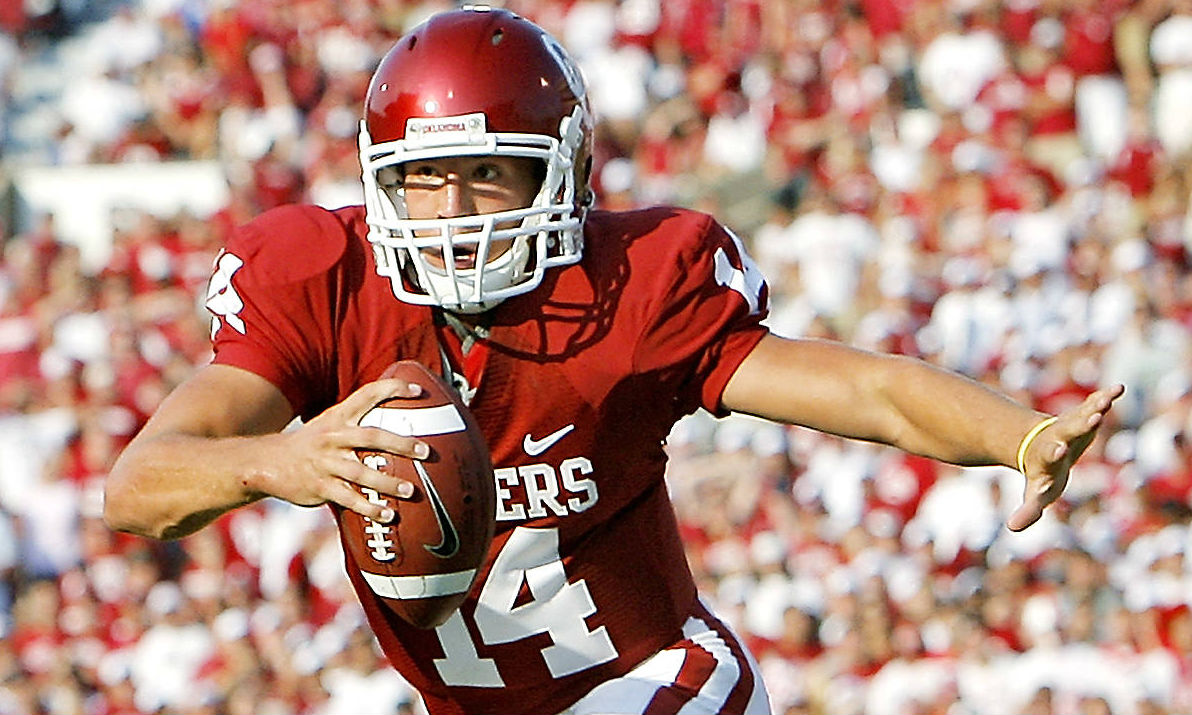If you were to look at the 2009 final NCAA football standings, you would see an 8-5 finish for the Oklahoma Sooners. While this finish might be respectable for most programs, it is very unacceptable for most Sooner fans. It was one of only three seasons since the turn of the century that the Sooners failed to notch ten victories. Considering the circumstances, however, the disappointing finished was to be expected.
With most of the starters from the previous season’s title run, 2009 was poised to be another year of championship contention for the Sooners. However, the Sooners became ravaged by injury. Several starters on both sides of the ball became injured during the preseason and early part of the season, including tight end Jermaine Gresham, who went on to be drafted in the first round of the NFL Draft. No injury would have been as devastating to the Sooners’ title hopes as one to quarterback Sam Bradford.
Coming off his Heisman campaign the year before, expectations were high for Bradford and the offense. That would quickly changed during the season opener against No. 22 BYU. Bradford got sacked during the second quarter and suffered a shoulder injury that sidelined him the rest of the game. The Sooners went on to lose, 14-13, in a game that was broadcast on ESPN and played at the Dallas Cowboys’ new stadium.
The Sooners treaded water during Bradford’s absence, winning three games against Idaho State, Baylor, and Tulsa, but losing a close game against Miami (FL). Bradford attempted to comeback from injury against Texas in the Red River Rivalry, but again landed on his hurt shoulder that forced him out the rest of the game. The Sooners ended up losing 16-13, marking the second consecutive loss against the Longhorns. Bradford was sidelined the rest of the season and the Sooners finished the season with eight wins. Bradford, along with 12 other players, declared for the draft after the season.
The 2009 season initiated a run of dissension as title contenders for the Sooners. After winning a national championship in 2000 and appearing in the title game in 2003, 2004, and 2008, the Sooners failed to reach the title game in the next five seasons. The Sooners only made one BCS bowl game during that stretch and failed to finish the season in the top five of the AP poll rankings. The recruiting classes started to drop for the program, as the recruiting classes for the top programs in the SEC and Big Ten started to improve over the Sooners. The dominance the Sooners showed during the 2000-2010 decade was taken over by Alabama, who won five titles between 2009-2016.
It’s hard to blame all of it on Sam Bradford’s injury in 2009, but it’s very easy to hypothesize that the Sooners’ recruiting and season woes started after the disappointing season in 2009 following the 2008 title run. Had it not been for Bradford’s injury, the Sooners may have been competitive enough to continue the run of success they had experienced the previous few seasons.




